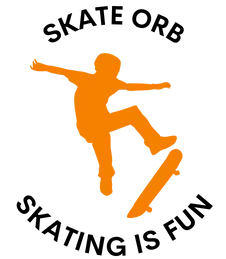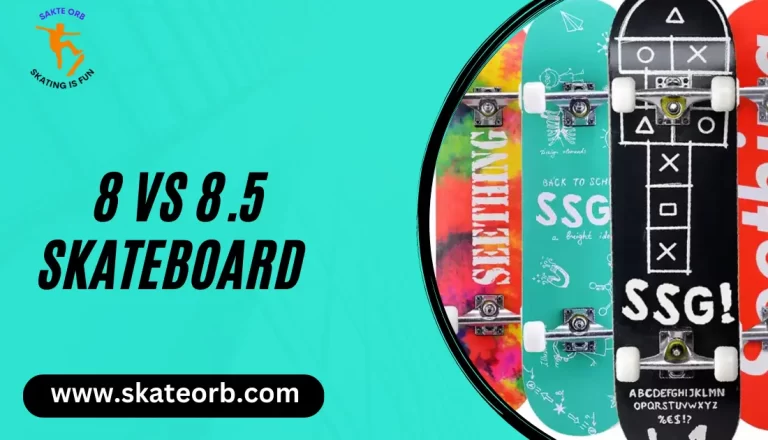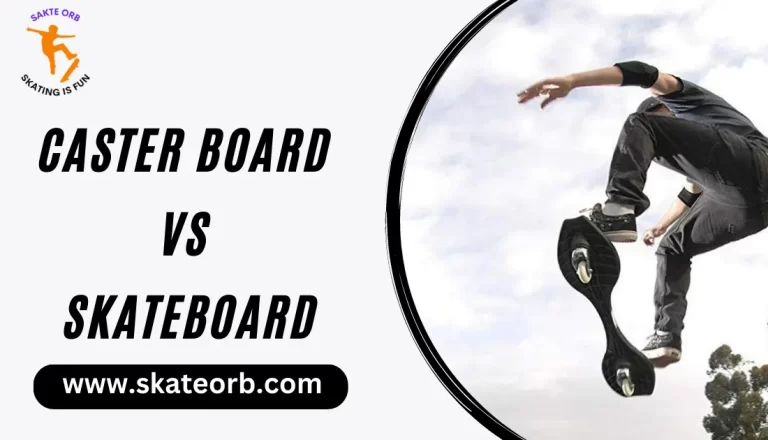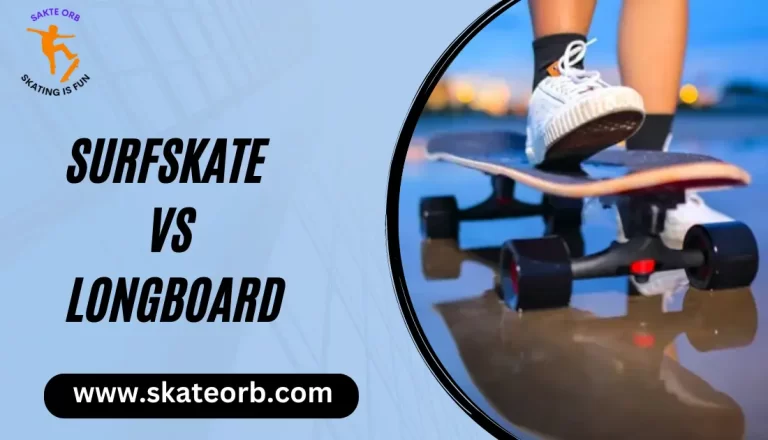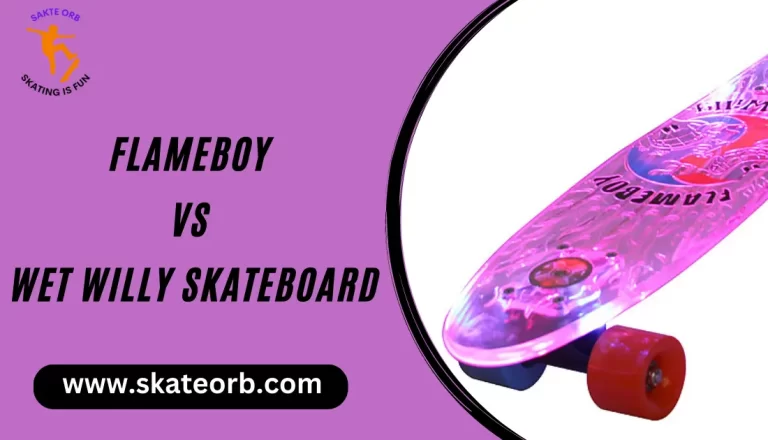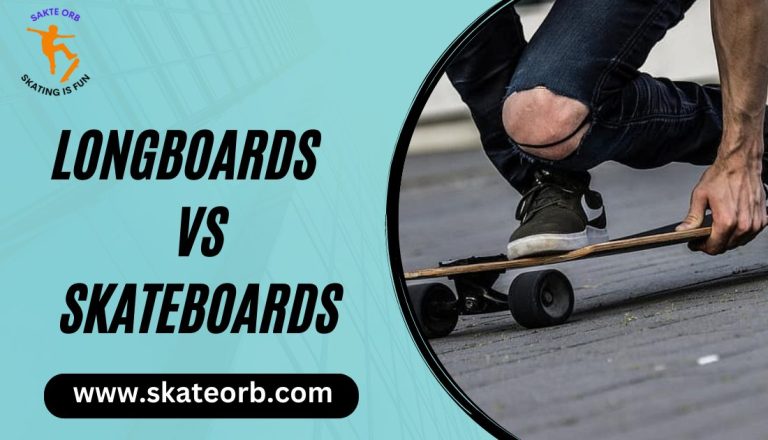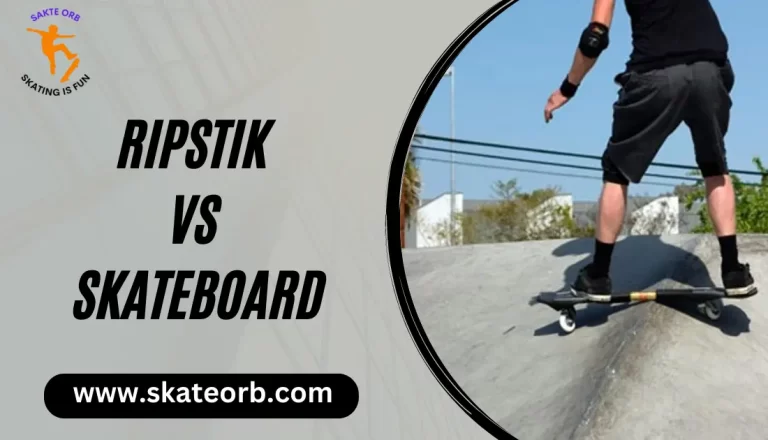Nose vs Tail Skateboard (Easiest Ways to Discriminate)
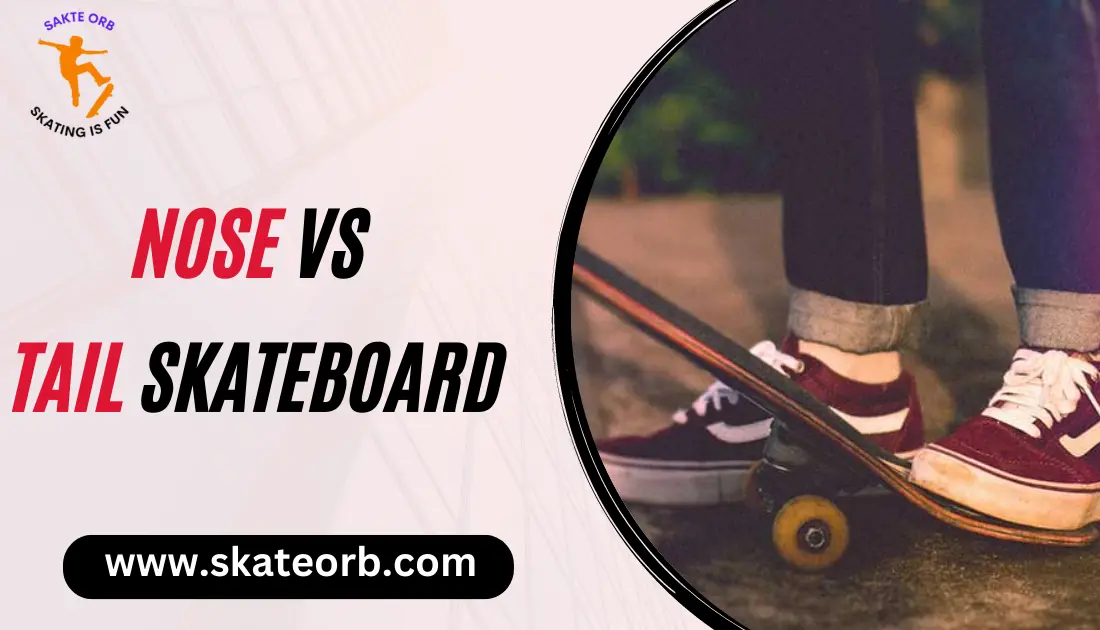
It doesn’t really matter whether you go first, nose or tail. What matters is how you feel about or what you hope to accomplish with the board.
Your preferred riding style will depend on the size and steepness differences. Many riders find it simpler to perform tricks using the deck tail because the concave raises the board higher in the air.
Many skateboards have concave or other unique nose and tail shapes. The majority of skateboards have a nose with distinctive brightly coloured hardware on it in order for skaters to easily distinguish the nose from the tail.
On classic skateboards, the tail is curved forward and the nose is flat and spherical. Even if the ends of current skateboards are the same, sometimes it is unnecessary to differentiate between the nose and tail. We shall go into detail about nose vs tail skateboards in this article.
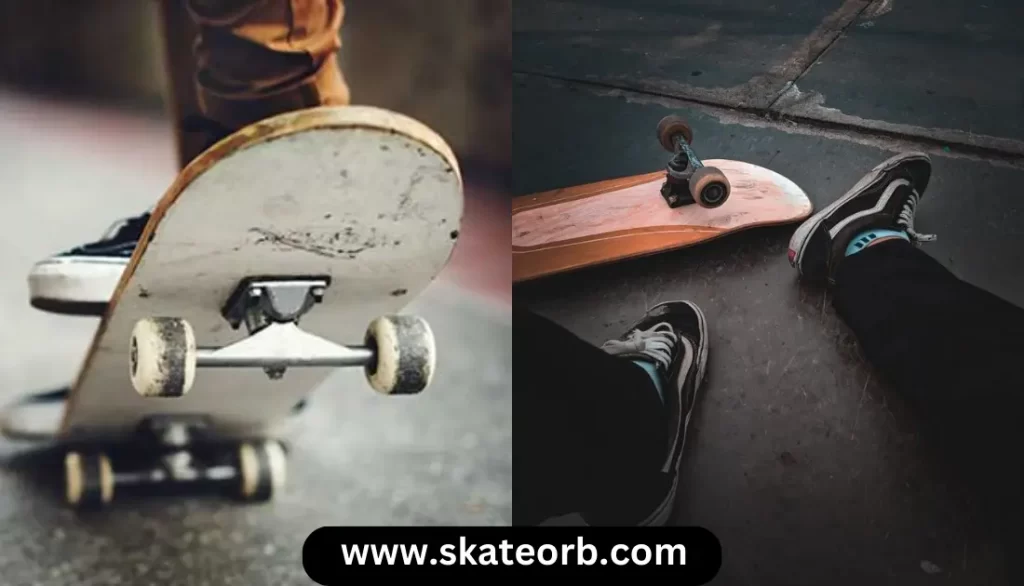
Definition of Nose vs Tail Skateboard
Usually, a skateboard’s nose is bigger and more curly than its tail. It is used for tricks like ollies and nollies that require elevating the front of skateboard. The tail, a flatter, narrower end of the skateboard, is used for tricks that involve elevating the back of a skateboard.
An element of a skateboard is the nose. It has a strong yellow accent hue. It is angled to provide a different appearance from the skateboard’s tail. It is shaped like a circle. It has a level exterior. The nose of the skateboard has a nose guard built into it to protect it.
Although the skateboard’s nose to tails are at different angles, there are certain skateboards where they appear to be the same. Given that it is the skateboard’s tail, it is not painted in any vivid colours. It is created closer to the earth and is smaller in size. It facilitates the skateboard’s quicker wearThe skateboard’s tail causes the back to face the opposite way from the nose.
Difference Between Nose vs Tail Skateboard
It can be challenging to distinguish between a skateboard’s nose and tail. The deck of your skateboard will wear out more quickly if you ride it incorrectly. If you enjoy riding skateboards, you should be able to tell the difference between the board’s nose and tail.
The primary distinction between a skateboard’s nose and tail is (size, measurement, and sharpness). The tail is shorter while the nose gets bigger from the tip. There are many parallels between a skateboard’s nose and tail.
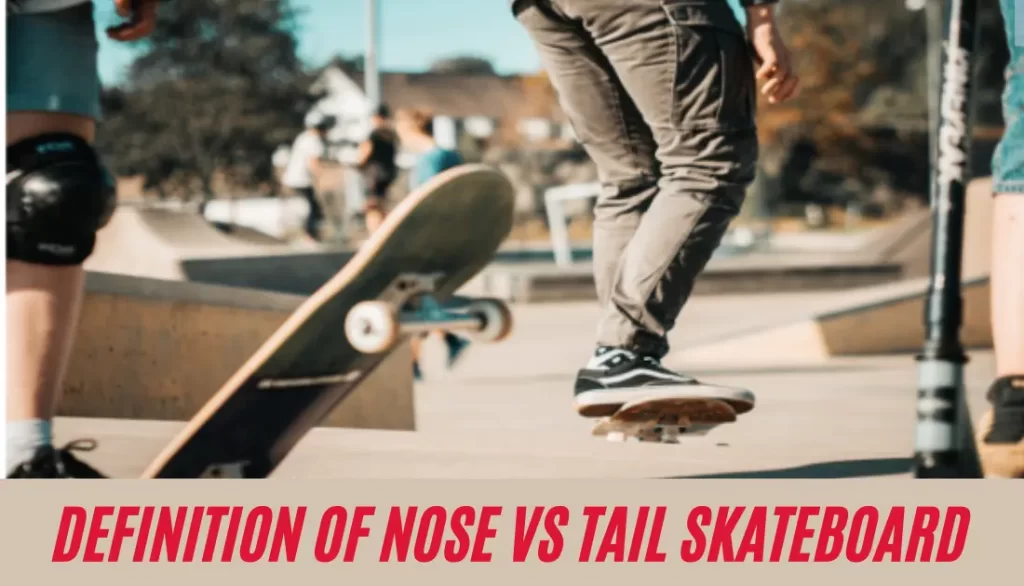
Protector
Several skateboards are sold with fully tailored guards already installed. It protects the tail and nose edges of the skateboard against forceful collisions and vibrations. Durable plastic is used to construct the nose guard’s front side, and plastic is also used to construct the tail.
The many designs for this feature look avant-garde and are pricey at the same time. Yet not all skateboards have the distinguishing characteristics we’ve been talking about.
The majority of them feature a comparable tail and nose, making it easy for the user to flip and skate. Keep an eye on the nose and the side of the tail if you want to identify the difference. Without coloured graphics, a skateboard’s appearance is still lacking.
Shape
The first step in determining the distinctions between the tail and the nose is to look at the shapes. The little surface that protrudes from the end of a skateboard is known as the tail.
The opposing side, which is a little bit longer than the other, is where the nose is potted. A wide nose is a feature of several skateboards.
Some manufacturers create skateboards with a more symmetrical surface.When the nose is big, it could be hard to keep the skateboard under control. The tiny tail is very close to touching the ground.The reason the nose is referred to as a “catch” when you complete an ollie is because it contacts your foot.
That may be the full opposite for some decks. The longer and steeper portion is wide enough to accommodate the skateboard. The tail, on the other hand, may appear smaller and sharper. Such skateboards can assist you in doing difficult manoeuvres.
You Can Also Read : High Trucks vs Low Trucks
Colours
To make it simpler for you to distinguish which end of the board is the nose and which is the tail, some manufacturers produce decks with various colours or coloured marks on the nose and tail.
Don’t worry if your board lacks the colour marks. To make it easier to remember which end is which, you may always put some stencilled graphics or airbrush your preferred colours on there.
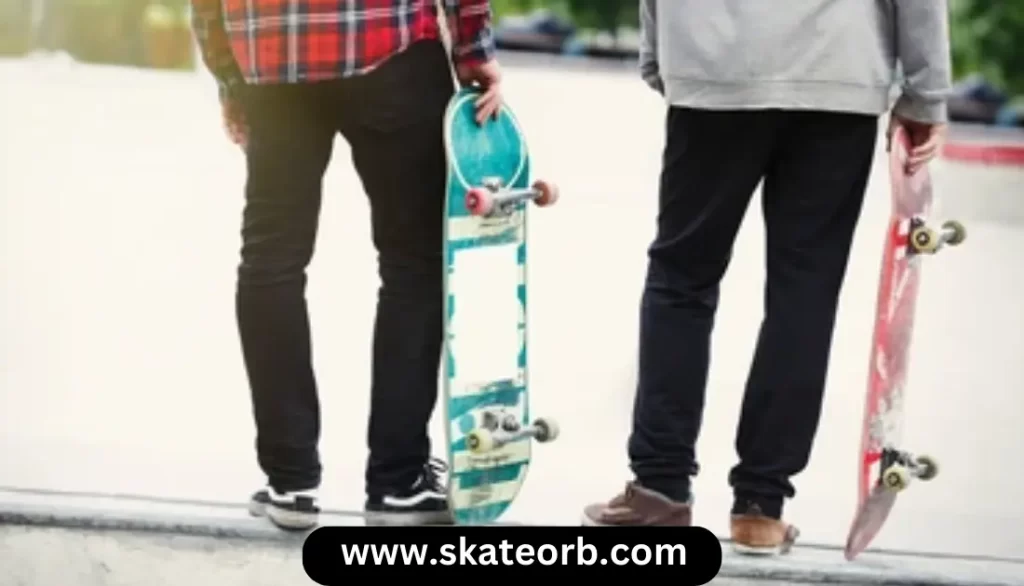
Place for the Brand Name
Several varieties of skateboards will have the name or logo of the product’s maker printed on them.
So, all you have to do is glance at the brand label to tell the nose from the tail. The skateboard’s tail will point in the opposite way from the letter’s nose.
Height of Nose and Tail
When it comes to skateboarding, the height of the skateboard’s nose and tail are also crucial factors. The size of the board is partly determined by the height of the nose, and the amount of space required for trick execution is partly determined by the height of the tail.
To make the most of your skateboard and prevent any injuries, it’s critical to pick the proper size and height for each component.
Different Tricks
Tricks using the nose and tail are available in a wide variety. The nose is perfect for completing basic tricks like popping, sliding, grinding, and kick flips while the tail is better suited for performing complex tricks like 360s, heel flips, and 540s.
Understanding the differences between a board’s nose and tail, each of which offers its own unique set of tricks, will help you make the most of your skating experience.
Two Decks on the Nose and Tail
Although there aren’t many of us who favour a twin nose or twin tail, these message boards do exist.
The nose and tail of twin nose boards are identical in terms of size, shape, and length. A dual nose board will have this appearance and feel on both ends because the nose is often broader and flatter.
Also symmetrical are twin tail decks. Because tails skateboards often have a thinner profile and a slight upward slant, a twin tail will have ends that look like this on both sides.
Comparison Table
The comparison between nose and tail of skateboard in the form of table is given below:
| Parameters of comparision | Nose of a skaeboard | Tail of a skateboard |
| Angle | Larger | Acute |
| Bright colour | yes | No |
| Shape | Round and flat | Curve |
| Guard | Nose Guard | Tail Guard |
| Height | Long | Short |
| Rocker | Mellow | Steeper |
Skateboard Marking Ideas For The Nose And Tail
The above identification symbols can be used to tell the difference between the skateboard nose and tail. It is best to mark your skateboard’s nose and tail if they have remarkably comparable designs.
Following, Skateboard Cast will provide you with marking advice to make it simple for you to recognise the skateboard’s nose and tail.
Once you have discriminated between these two orientations, it is best to use distinct symbols to indicate skateboards with comparable nose and tail designs.Asking the salesperson will reveal which is the nose and which is the tail.
After that, you can draw notes on the board’s ends using crayons or markers. Use long-lasting, durable ink, please.
This will make it easier for you to always tell the nose from the tail when using the device. You will find this bookmarking advice beneficial when using, especially for individuals who easily forget things.
Conclusion
If you want to be able to perform tricks on your skateboard, it’s crucial to comprehend the nose vs tail skateboard. You can handle your board more effectively and ensure that your tricks seem cleaner when you are aware of the location of every component. You will advance as a skater if you comprehend your board’s shape and handling characteristics.
FAQs
Which Side of the Skateboard is the Nose?
The answer of how to tell the front of a skateboard is that, Your board’s nose and tail are its front and back, respectively. A skateboard’s nose is longer and raised off the ground than its tail. Only skateboards with twin tails have the precise front and back measurements.
Which Side of the Skateboard is the Front?
The skateboard’s front. Skateboards’ tails are typically measured from the end of the board to the back truck bolts (usually curved up at about a 10 degree angle from the rest of the deck).
Which Foot is a Skateboard’s Back?
In order to make their skateboard easier to handle, skateboarders often place their dominant foot in the rear position. Stand up straight and ask someone to gently push you from behind to help you decide which position is best for you. Your lead foot is the one you use to steady yourself.

Who Is Roy Harris
Hey there, I’m Roy Harris, and skateboarding is my life.
Growing up in sunny Southern California, I fell head over heels for skateboarding at an early age. From the moment I stepped on a skateboard, I knew it was my calling.
